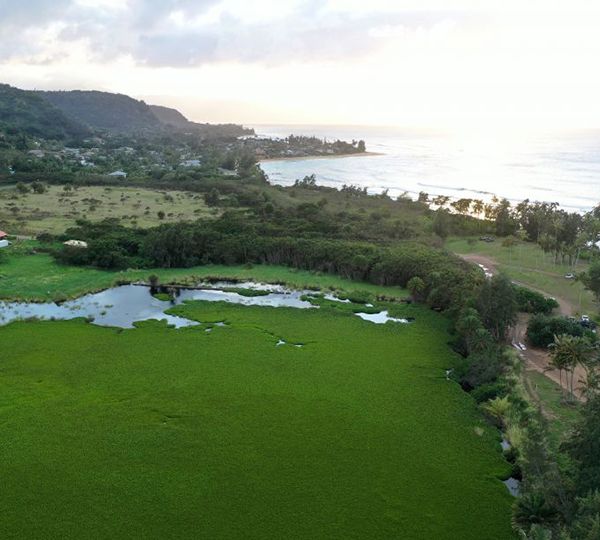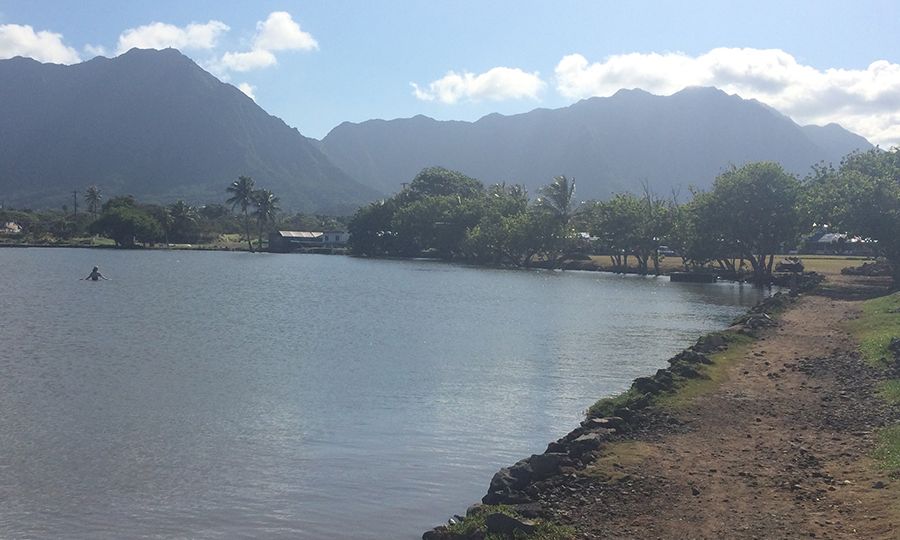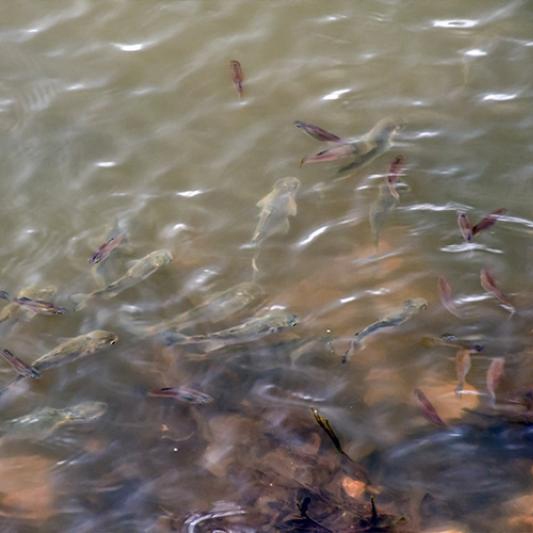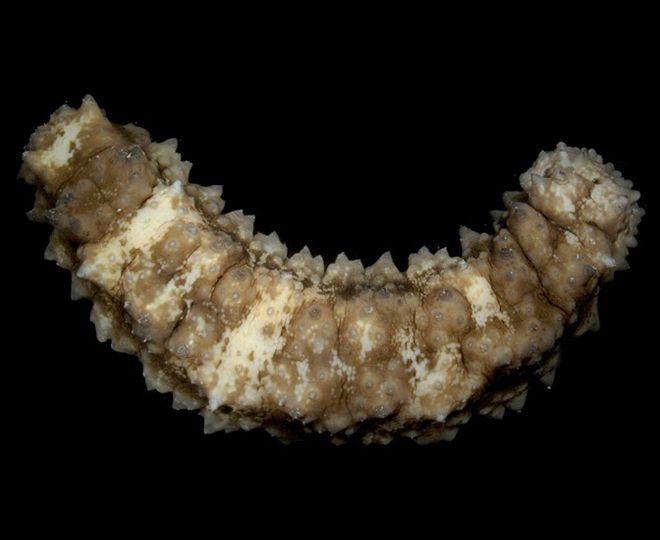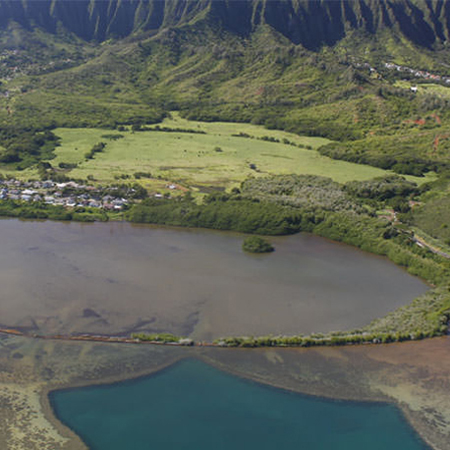Aquaculture-Hawaii Aquaculture Collaborative
PI: Carmella Vizza
Wetland restoration in Hawaiʻi combines traditional Hawaiian practices, conservation, agriculture, and aquaculture, and requires community involvement and complementary research efforts for success. This project will create a place-based research program and community of practice at Kalou, O‘ahu with the North Shore Community Land Trust, delivering new insight on water quality, fish populations, and ecosystem productivity.
Wetland restoration in Hawaiʻi combines traditional Hawaiian practices, conservation, agriculture, and aquaculture, and requires community involvement and complementary research efforts for success. This project will create a place-based research program and community of practice at Kalou, O‘ahu with the North Shore Community Land Trust, delivering new insight on water quality, fish populations, and ecosystem productivity.
PI: Robert Toonen
Hawaiian fishpond baitfish populations have plummeted over decades, but causes are uncertain because Hawaiian estuaries are impacted by a range of threats including invasive species, habitat degradation, and climate change. This project investigates decline causes by documenting historical management knowledge, exploring state-wide fish abundance changes, and testing hypotheses related to habitat degradation and invasive competition.
Hawaiian fishpond baitfish populations have plummeted over decades, but causes are uncertain because Hawaiian estuaries are impacted by a range of threats including invasive species, habitat degradation, and climate change. This project investigates decline causes by documenting historical management knowledge, exploring state-wide fish abundance changes, and testing hypotheses related to habitat degradation and invasive competition.
PI: Andre Seale
Efforts to repopulate Hawaiian fishponds have encountered challenges, as natural recruitment of juvenile ʻamaʻama (striped mullet) has become unreliable and direct introduction of hatchery-raised fry has proven unsuccessful. This project tests adjusting the hatchery environment to precondition ʻamaʻama, improve their environmental tolerance, and optimize their survival and growth once introduced to the fishpond setting.
Efforts to repopulate Hawaiian fishponds have encountered challenges, as natural recruitment of juvenile ʻamaʻama (striped mullet) has become unreliable and direct introduction of hatchery-raised fry has proven unsuccessful. This project tests adjusting the hatchery environment to precondition ʻamaʻama, improve their environmental tolerance, and optimize their survival and growth once introduced to the fishpond setting.
PI: Andre Seale
Sea cucumbers, including the native Hawaiian sea cucumber Stichopus horrens, have become increasingly important economically, with the rise in aquaculture efforts, but the lack of reliable reproduction techniques present a bottleneck in its production. This research aims to improve sea cucumber productivity by developing and testing hormones specific to S. horrens in controlling its spawning.
Sea cucumbers, including the native Hawaiian sea cucumber Stichopus horrens, have become increasingly important economically, with the rise in aquaculture efforts, but the lack of reliable reproduction techniques present a bottleneck in its production. This research aims to improve sea cucumber productivity by developing and testing hormones specific to S. horrens in controlling its spawning.
PI: Lisa McManus
Recent loko iʻa (Hawaiian fishpond) restoration projects aim to rebuild their previously large role in an integrated agroecology system, increasing local fish stocks inside ponds and via beneficial spillover effects in adjacent estuaries and bays. However, with the specter of climate change, this work explores possible detrimental effects on restoration efforts and fishpond ecosystem productivity.
Recent loko iʻa (Hawaiian fishpond) restoration projects aim to rebuild their previously large role in an integrated agroecology system, increasing local fish stocks inside ponds and via beneficial spillover effects in adjacent estuaries and bays. However, with the specter of climate change, this work explores possible detrimental effects on restoration efforts and fishpond ecosystem productivity.


